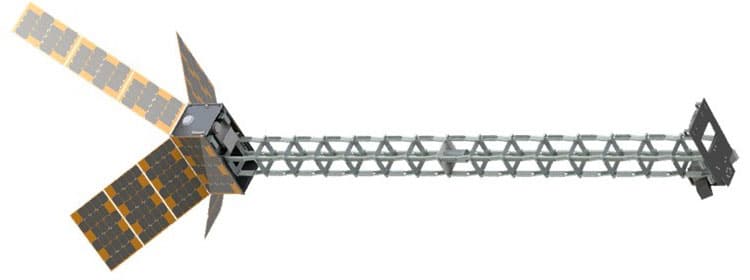ESA is to develop two new Scout satellites: NanoMagSat and Tango. The NanoMagSat will be used to measure Earth’s magnetic field to help assess space weather hazards and will continue the work of ESA’s current Swarm mission. Tango, on the other hand, will measure greenhouse gas emissions from human activity. This satellite will complement the upcoming Copernicus Carbon Dioxide Monitoring mission, the Sentinel-5 mission, and the current Sentinel-5P mission.
ESA’s Earth Observation Programme Board took the decision to make the NanoMagSat and Tango missions a reality. Scout satellites can deliver value-added science by either miniaturizing existing space technologies or demonstrating new observing techniques. These small satellites are developed within a low-cost and short development process of less than €35 million and three years from kick-off to launch.
“We are very pleased to add two new Scouts to our Earth observation mission portfolio,” ESA’s Director of Earth Observation Programmes, Simonetta Cheli, said. “These small science missions perfectly complement our more traditional existing and future Earth Explorer missions and will bring exciting benefits to Earth science and to society.”
The NanoMagSat mission’s objective is to maintain Europe’s leadership in monitoring Earth’s magnetic field and will measure the ionospheric environment. Though it is invisible to the naked eye, the magnetic field and electric currents around Earth have a profound impact on our daily lives. The results of the NanoMagSat mission will reveal the ionospheric environment and the magnetic field’s permanent state of flux.
 NanoMagSat Scout satellite. Credit: ESA
NanoMagSat Scout satellite. Credit: ESA
NanoMagSat will allow for a much-improved understanding of the magnetic field and the role of the Sun in the atmospheric-ionospheric-magnetospheric system. The information obtained from NanoMagSat will have many practical applications, including space weather hazard assessments, precise navigation, reference models for smartphones, directional drilling, and the World Magnetic Model.
The mission will consist of a constellation of three 16U satellites, launched nine months apart. The miniaturized absolute magnetometer and high-frequency magnetometer will be carried at the end of a boom for magnetic measurements, along with the Langmuir probe to measure electron temperature and density and two GNSS receivers.
The Tango mission will focus on monitoring and measuring three major greenhouse gases, methane, carbon dioxide, and nitrogen dioxide, which are being emitted from large industrial sites. The mission will complement the current Copernicus Sentinel-5P mission and the upcoming Copernicus Carbon Dioxide Monitoring mission, which will measure methane and nitrogen dioxide from human activity to verify the Paris Agreement.
In addition, the Tango mission is responsible for keeping tabs on around 150-300 known large facilities and power plants every four days. The images it will provide will be high-resolution and cover the surrounding pollution and the emission plumes. This means that the emissions can be determined with a single observation.
The Tango mission will be using two 25-kg satellites, which will be orbiting together. One of the satellites will measure methane and carbon dioxide, while the other one will measure nitrogen dioxide.
>>> Read full article>>>
Copyright for syndicated content belongs to the linked Source : Tech Explorist – https://www.techexplorist.com/esa-build-two-new-scout-missions-nanomagsat-tango/81397/






























